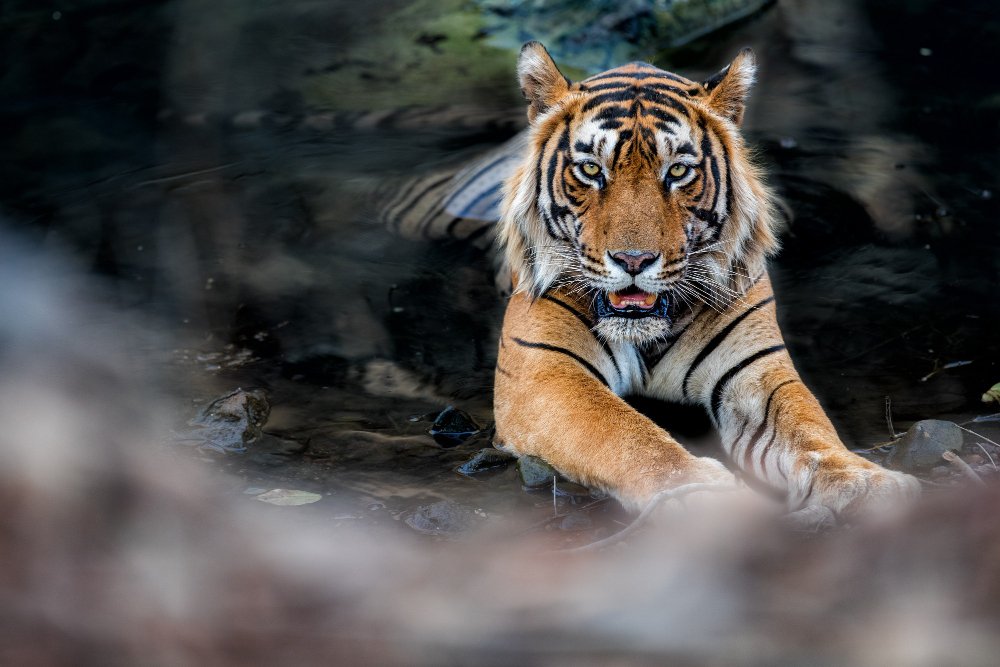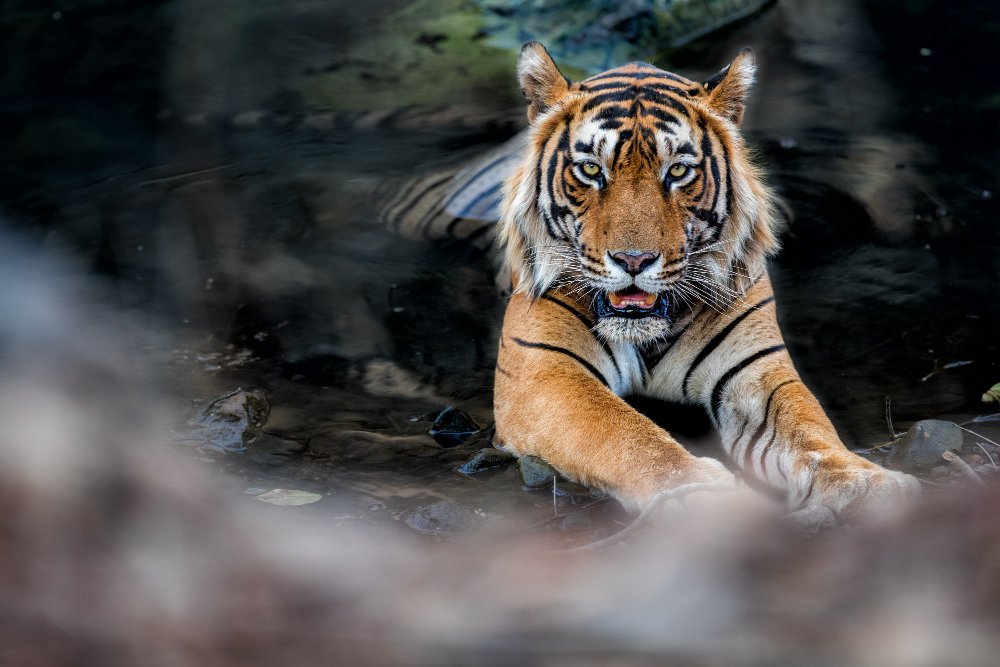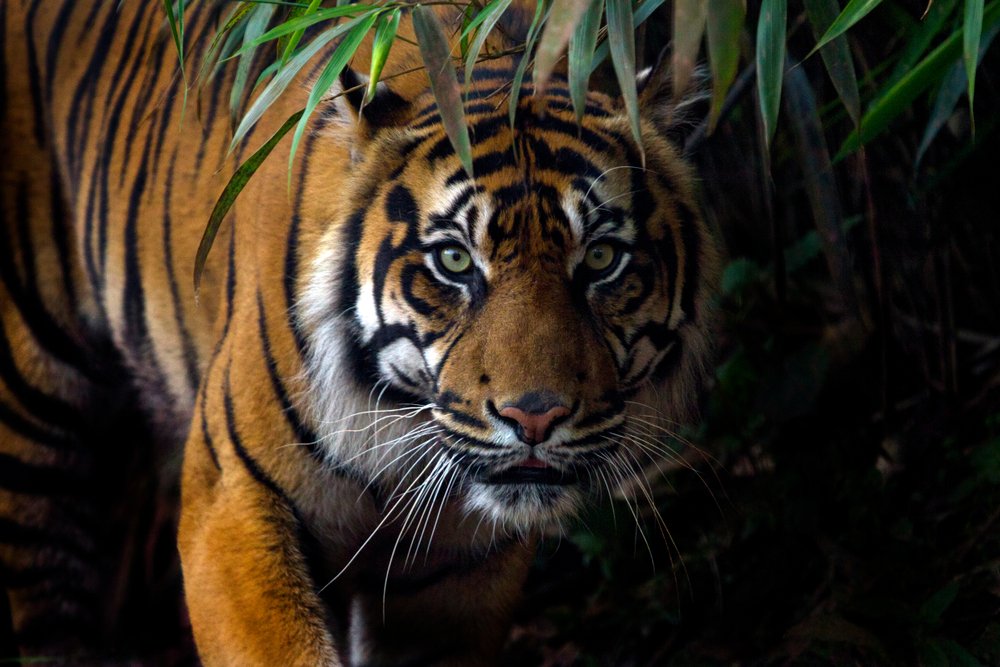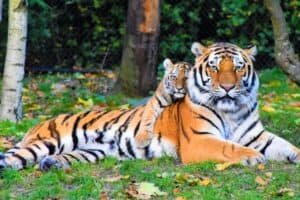Have you ever wondered that How Many Black Tigers Are Left In The World? There are known to be just six such black tigers on the planet. The term black tiger refers to a rare genetic mutation that causes tigers to have dark stripes instead of the typical orange and black stripes. This mutation is only found in Bengal tigers, which are native to India, Bangladesh, Nepal, Bhutan, and China.
Despite their name, there are actually no true black tigers in existence. Instead, these so-called black tigers are more accurately described as melanistic tigers, which means they have an excessive amount of dark pigment in their fur.
This genetic mutation is thought to occur in about 1 in every 10,000 wild tiger births. It is a recessive gene, meaning that both parents must carry the gene for it to be expressed in their offspring.
Unfortunately, the number of black tigers in the world is unknown as they are extremely rare and elusive creatures. In fact, there have been very few confirmed sightings of black tigers in the wild.
Table of Contents
Current Population Trends Of Black Tigers

Due to their rarity, it is difficult to accurately estimate the current population of black tigers in the world. However, conservationists believe that there could be less than 10 black tigers left in the wild.
The main threat to black tigers is human activities such as poaching and habitat destruction. As with all tiger species, they also face competition for resources with humans and other predators.
In recent years, conservation efforts have been focused on protecting tigers in general rather than specifically targeting black tigers. This has led to an increase in the overall tiger population, but it is uncertain how many of these are black tigers.
What Is The Ecology And Behavior Of Black Tigers?
Black tigers have the same ecology and behavior as other Bengal tigers. They are solitary animals, only coming together for mating purposes. They primarily hunt at night and their diet consists of deer, wild boar, and other large prey.
Their dark coloration actually provides an advantage in their forest habitat as it allows them to blend into the shadows and sneak up on their prey. However, this dark coloration also makes them more vulnerable to human hunters.
Effects Of Deforestation On Black Tiger’s Population

Deforestation is one of the major threats to black tigers. As their habitat is destroyed, they are forced to compete for resources in smaller areas. This can lead to a decrease in genetic diversity and increase the chances of inbreeding.
Additionally, deforestation also disrupts their natural prey population, making it harder for them to find food. This can ultimately result in a decline in the overall tiger population, including black tigers.
Effects Of Climate Change On Black Tiger’s Population
Climate change is another major threat to black tigers. As temperatures rise, the amount of suitable habitat for tigers decreases. This forces them into smaller and more fragmented areas, making it harder for them to find mates and maintain genetic diversity.
Furthermore, climate change also affects their prey populations as extreme weather events can disrupt breeding patterns and decrease food availability. This can have a cascading effect on the black tiger population and other species in their ecosystem.
What Is The Role Of Black Tigers In The Ecosystem?
As apex predators, black tigers play a crucial role in maintaining the balance of their ecosystem. By keeping prey populations in check, they prevent overgrazing and protect plant species. They also help to regulate the populations of other animal species.
Black tigers also act as indicators of a healthy ecosystem. A decline in their population can be seen as an early warning sign of larger issues within the ecosystem.
How Many Black Tigers Are Left In The World? Conservation Efforts For Black Tigers

Conservationists are working hard to protect all tiger species, including the black tiger, through various methods such as habitat preservation, anti-poaching efforts, and education programs.
One major effort is the establishment of protected areas which provide safe havens for tigers to live and breed. These areas also help to reduce human-tiger conflicts.
Anti-poaching teams are also crucial in protecting tigers from illegal hunting. This involves monitoring and patrolling their habitats, as well as working with local communities to reduce demand for tiger products.
Education programs are also important in raising awareness about the importance of tigers and their conservation. This includes educating local communities on sustainable practices and reducing human-tiger conflicts.
How Can We Protect And Conserve Black Tigers?
The conservation of black tigers ultimately relies on the protection and preservation of their natural habitat. This includes implementing laws and regulations against poaching and illegal logging, as well as promoting sustainable practices in local communities.
Efforts should also be made to reduce human-wildlife conflict by creating buffer zones between tiger habitats and human settlements. Education and awareness programs can also help people understand the importance of protecting these iconic creatures.
Final Thoughts
Black tigers are a rare and elusive species that face many threats to their survival. With no true black tigers left in the world, it is important to protect and preserve the remaining melanistic tigers. Through conservation efforts and raising awareness, we can work towards ensuring a future for these magnificent creatures. While the exact number of black tigers may never be known, it is our responsibility to do everything we can to protect them.
Read Also: How Many Javan Tigers Are Left In The World?





